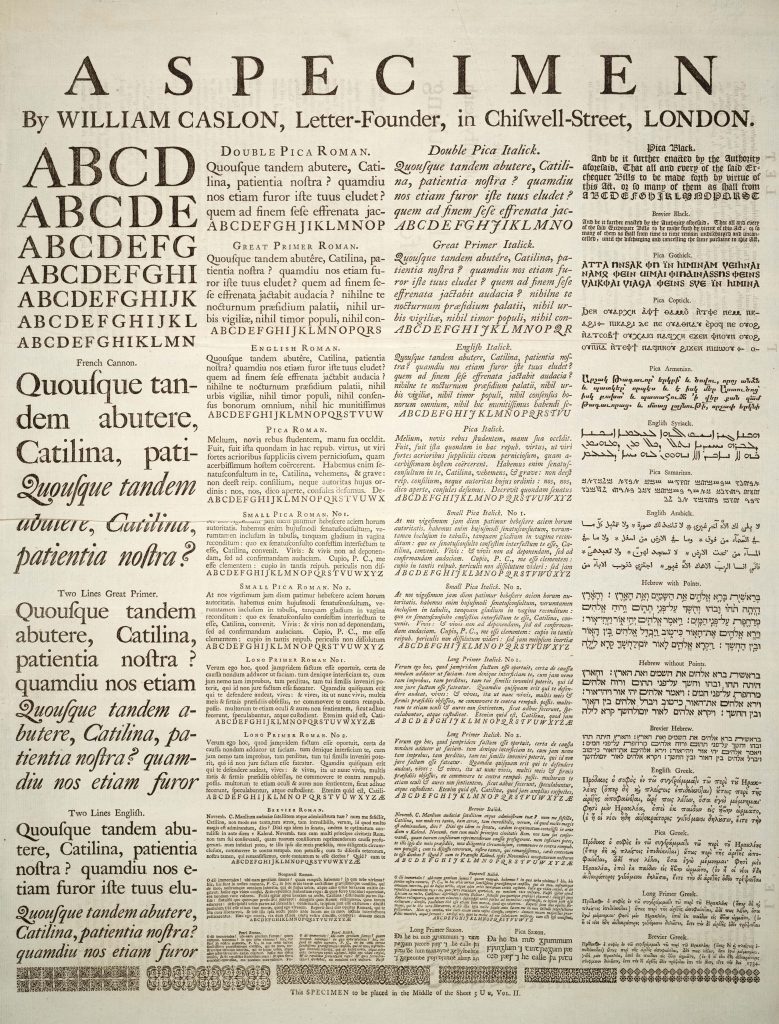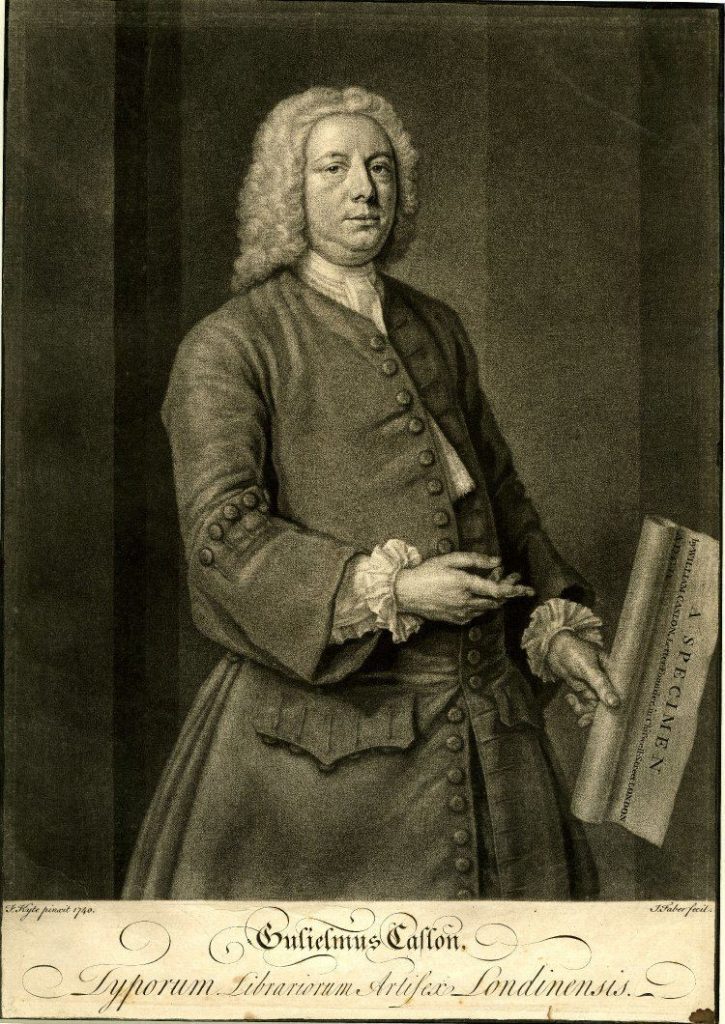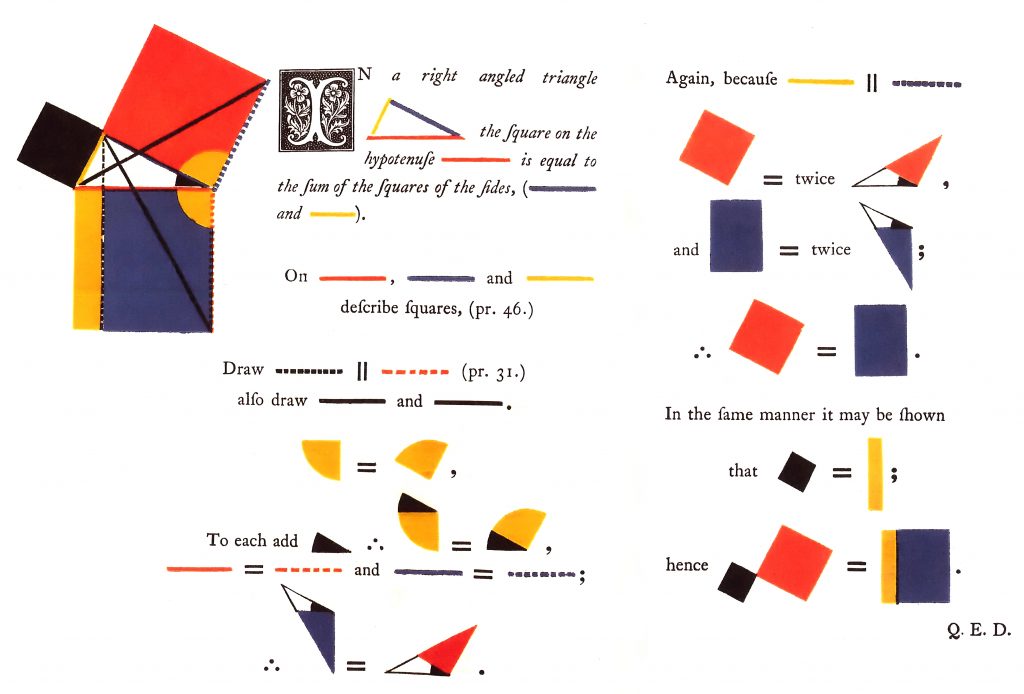A dive into the history of Caslon and it’s impact on Western design
Caslon is undoubtedly one of design’s most recognizable typefaces, mostly derived from its early popularity when it was first released by William Caslon. Started as an engraver of gunlocks and barrels, he was quickly familiarized with engraving letterforms as well. Soon after, Caslon was tasked to create an English Arabic typeface for Christian publications, notably the Society for Promoting Christian Knowledge, to be used in the Middle East. After gaining success from that, he engraved a Roman, Italic, and Hebrew version which led to the formal creation of Caslon, the typeface.
The typeface itself, with no surprise, rose in popularity. With its vast amounts of variations, William Caslon created the first-ever type specimen showcasing Titling, Roman and Italic, Black, Saxon, Gothic, Syriac and Arabic, Hebrew, Greek, and ornaments versions. Looking at the design itself, many would agree on how readable the typeface is. Caslon was categorized as ‘Old-Style,’ which means it has “wedged serifs, greater contrast between thin and thick strokes, upright stress, and horizontal crossbars” It was also to the point where Caslon’s type foundry became both the King’s main printer and was eventually set out to be the UK’s national typographic style. In the many years to come after its release, we can see Caslon being used in book printing companies, notably Chiswick Press. I think the most interesting and surprising where we can see Caslon being used was in the first American Declaration of Independence. The typeface started to see a decline in use in the UK around the time William Caslon died, however picked up again in America around the 1800s. Printers started exclusively using Caslon as its main typeface and were largely utilized in World War II as well. At one point, Vogue redesigned its magazine around the typeface.
Despite one’s opinion on Caslon, there’s no doubt how successful it was from the moment it was released in 1726 to the modern-day. It stands as one of the classic fonts one can use, which arose the famous phrase of “When in doubt, use Caslon.”



Sources
https://www.britannica.com/biography/William-Caslon
https://issuu.com/jbetzdesign/docs/whenindoubtusecaslon
https://www.typeroom.eu/william-caslon-10-things-to-know-about
https://www.green-coursehub.com/research-blog/william-caslon-typeface-designer